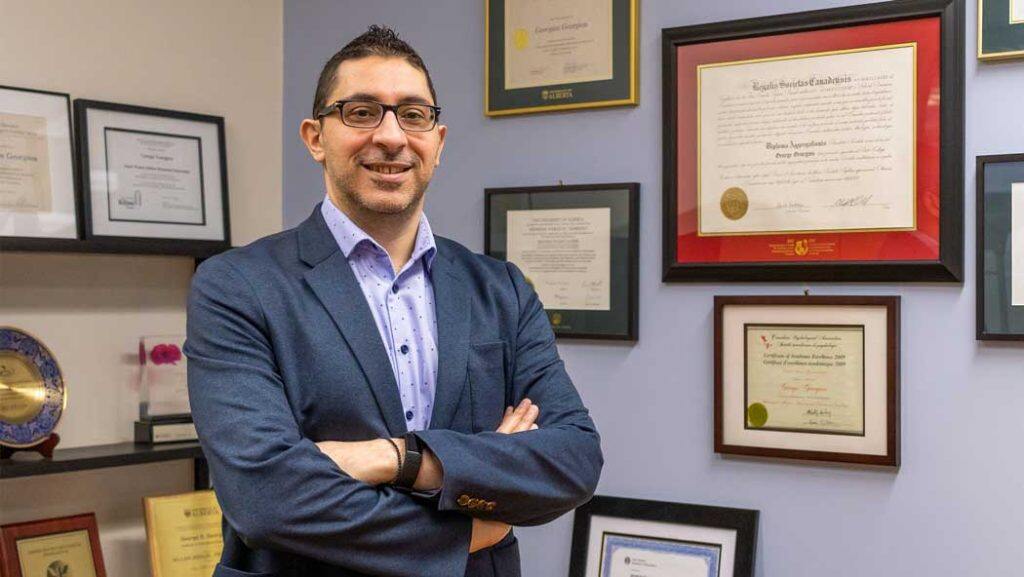Canadian education graduates are leaving universities with limited knowledge of the skills required to teach children to read, according to a literacy expert at the University of Alberta and his collaborators across Canada.


George Georgiou, a professor in the Faculty of Education, and his collaborators surveyed 642 graduating students at 11 universities in seven provinces and discovered they had limited knowledge of the basic concepts of literacy and were ill-equipped to help children struggling to read.
“There is nothing more important than learning to read for a child’s academic success,” says Georgiou, who also led the development of Alberta’s new English Language Arts and Literature curriculum.
His results show that on average, graduates surveyed were able to correctly answer only 64 percent of questions about phonology, the ability to perceive and manipulate speech sounds, and 60 percent of questions related to phonics, the ability to map letters to sounds.
And when it came to morphology, or breaking down the internal structure of words to derive their meaning, graduates averaged a correct response rate of just 34 per cent.
Georgiou has experienced this dearth of knowledge first-hand. He has been measuring the reading performance of students in Alberta since 2008, while introducing intervention programs to help students struggling to read.
“I walk into schools and ask our teachers, ‘What is phonological awareness or phonics?’ and some have not even heard these terms before,” he says. “How can you teach these concepts that are in the English Language Arts curriculum if you do not know what they are?”
The number of struggling readers has been rising across North America for decades.
Last year the American National Council on Teacher Quality released a report citing the country’s “literacy crisis,” finding that more than one-third of students in Grade 4 could not read at a basic level, making them four times as likely to drop out of high school.
Canadian scores in the Program for International Literary Assessment issued by the Organisation for Economic Co-operation and Development recently hit a historic low, he says. In 2022, the Ontario Human Rights Commission released the Right to Read report, showing that the province’s public education system was failing students with reading disabilities such as dyslexia by not using evidence-based teaching methods.
Those findings, combined with his own reading intervention experience, prompted Georgiou and his collaborators to conduct a survey of education programs in Alberta. Interest soon spread among concerned education deans and researchers across the country, so he decided to broaden the scope.
The results of that survey were remarkably consistent, he says, but so is the root problem: education students receive scant instruction in the basic concepts of language and literacy that are fundamental in learning to read English. In most universities, they are required to take just one course on literacy before they graduate.
“In Australia you can’t graduate and become a teacher without taking three courses on literacy, of which one must be on early literacy instruction,” he says, adding it’s a model that Canadian education faculties would be wise to emulate.
“We need a course on teaching kids to read when they struggle, so our undergraduate students should get their feet wet learning what this looks like,” he says, adding that struggling readers need well-informed teachers the most.
“Teachers will say, ‘My God, how come I didn’t know this before?’ When they change their instructional practices and collect their data, they’re so happy to see the improvement.
“We have evidence from many school divisions showing that once you train teachers, they can do an exceptionally good job.”
In line with Georgiou’s findings over the past two decades, Alberta Education is now requiring schools to test all students in kindergarten to Grade 3 in reading, and providing more than $45 million for schools to deliver reading intervention.
But reading intervention is expensive and delivered after reading problems appear, says Georgiou. That’s why teachers need sufficient post-secondary training in the first place.
“Universities are the root of this problem, and we need to think of ways to improve our teaching so it does not become bigger in the future,” he says.
Georgiou and colleagues plan to present their recent survey results at an upcoming conference of the Alberta Research Network in November and to the Society for the Scientific Study of Reading conference in Calgary next summer.





































